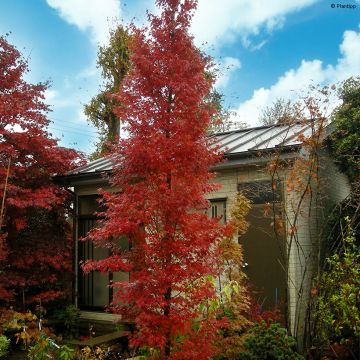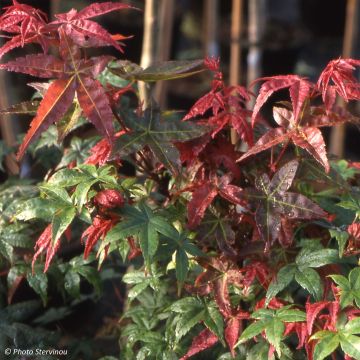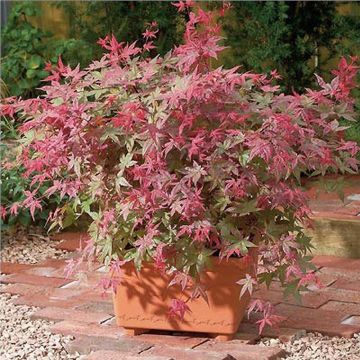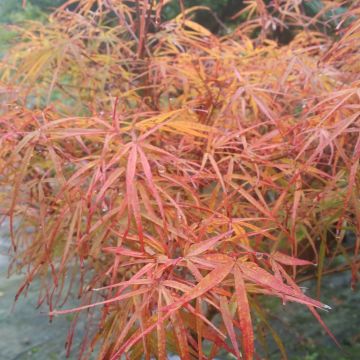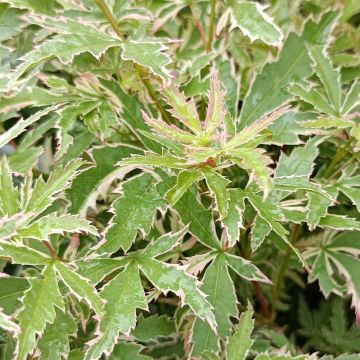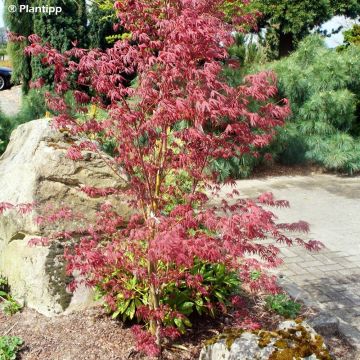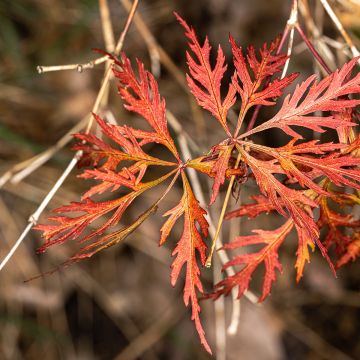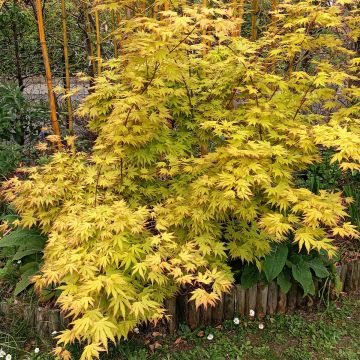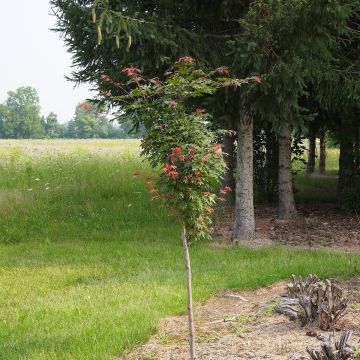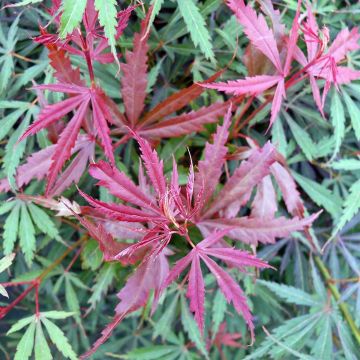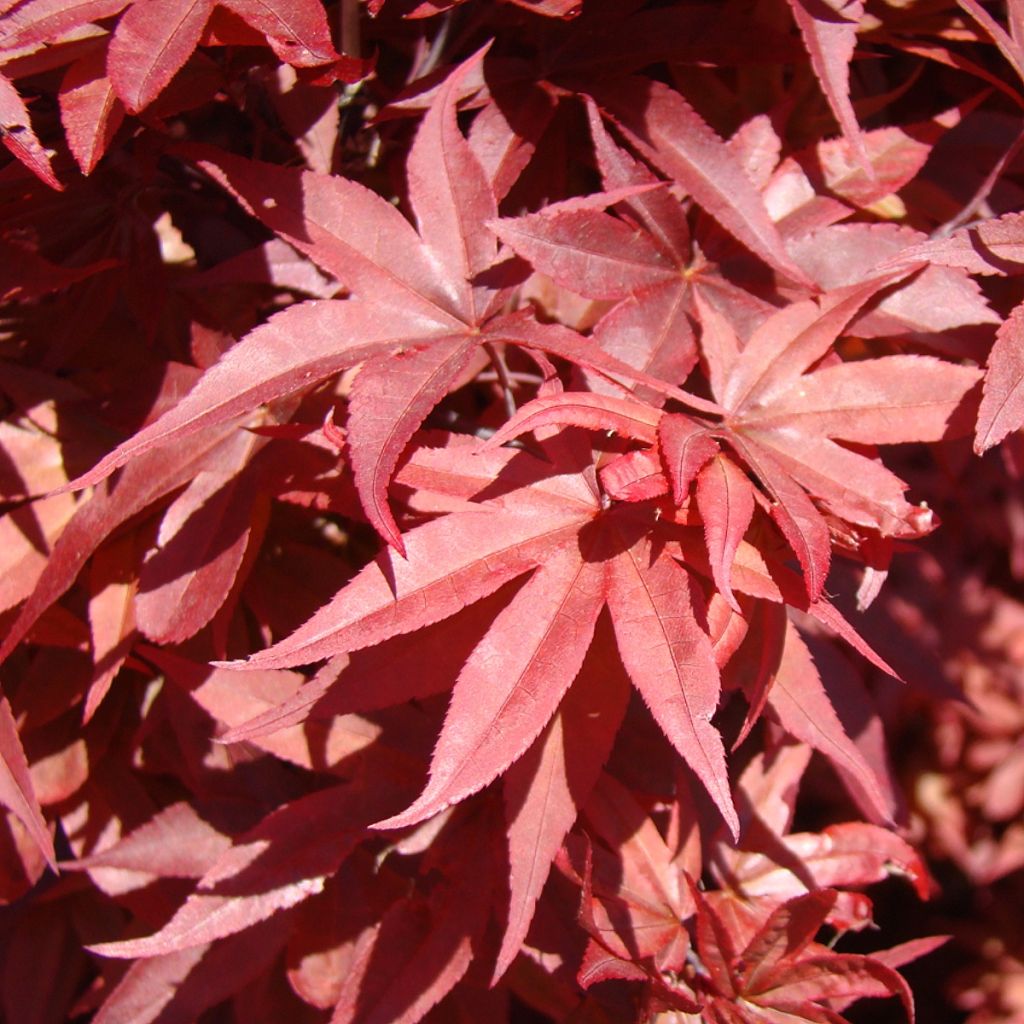

Acer palmatum Twomblys Red Sentinel - Japanese Maple
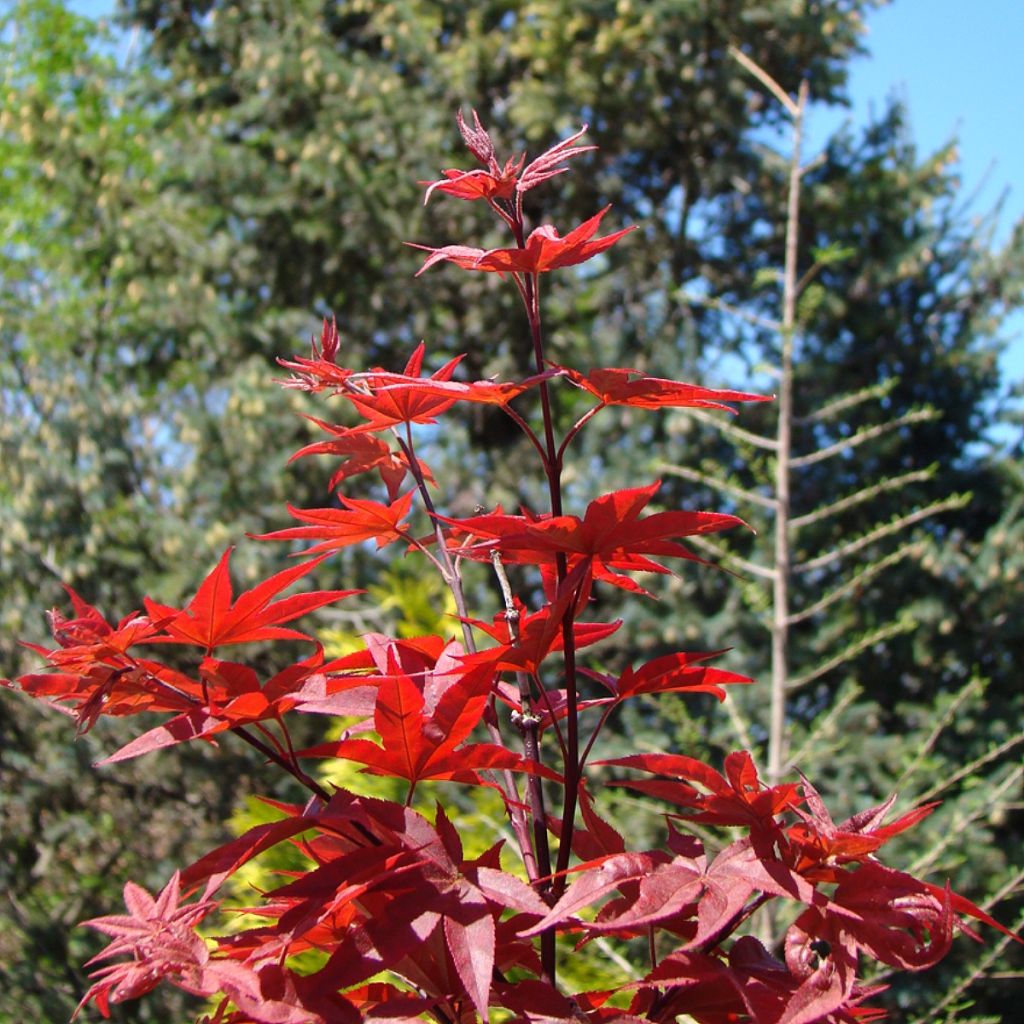

Acer palmatum Twomblys Red Sentinel - Japanese Maple
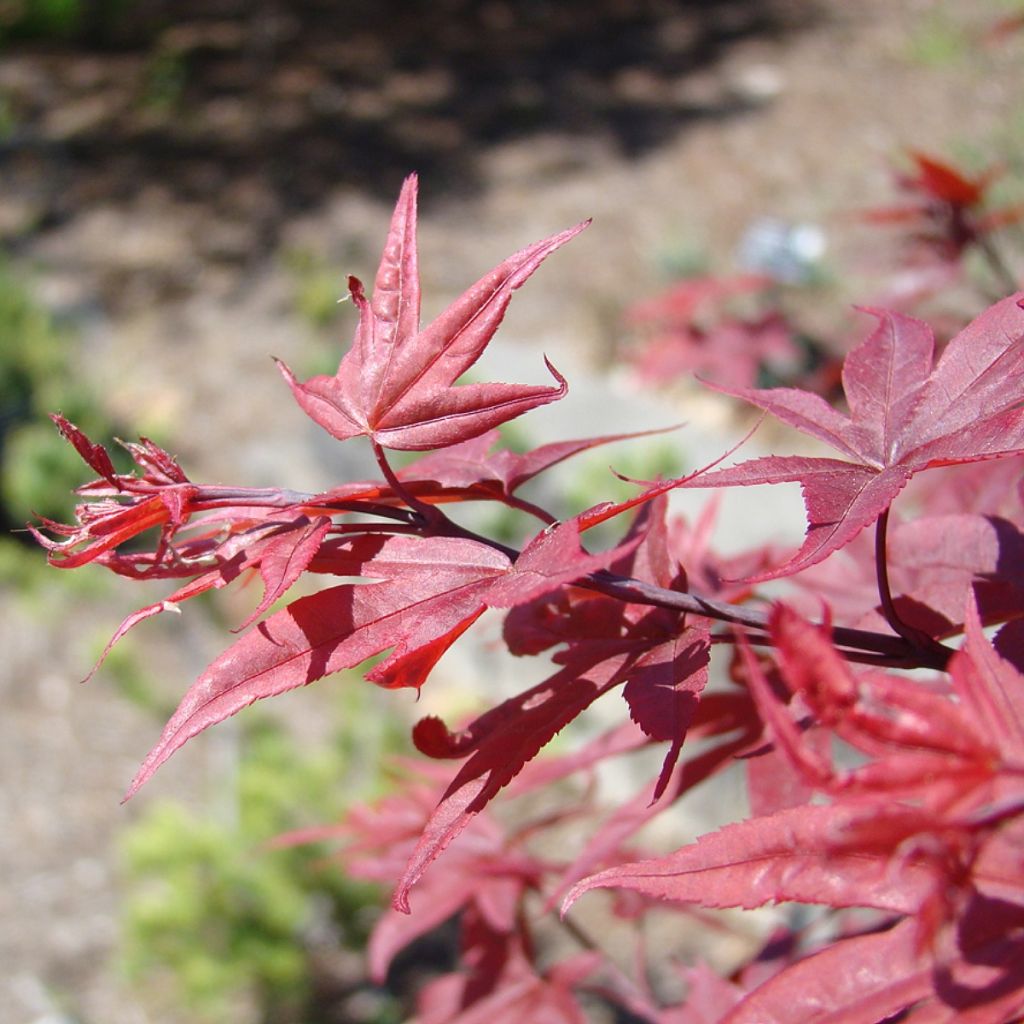

Acer palmatum Twomblys Red Sentinel - Japanese Maple
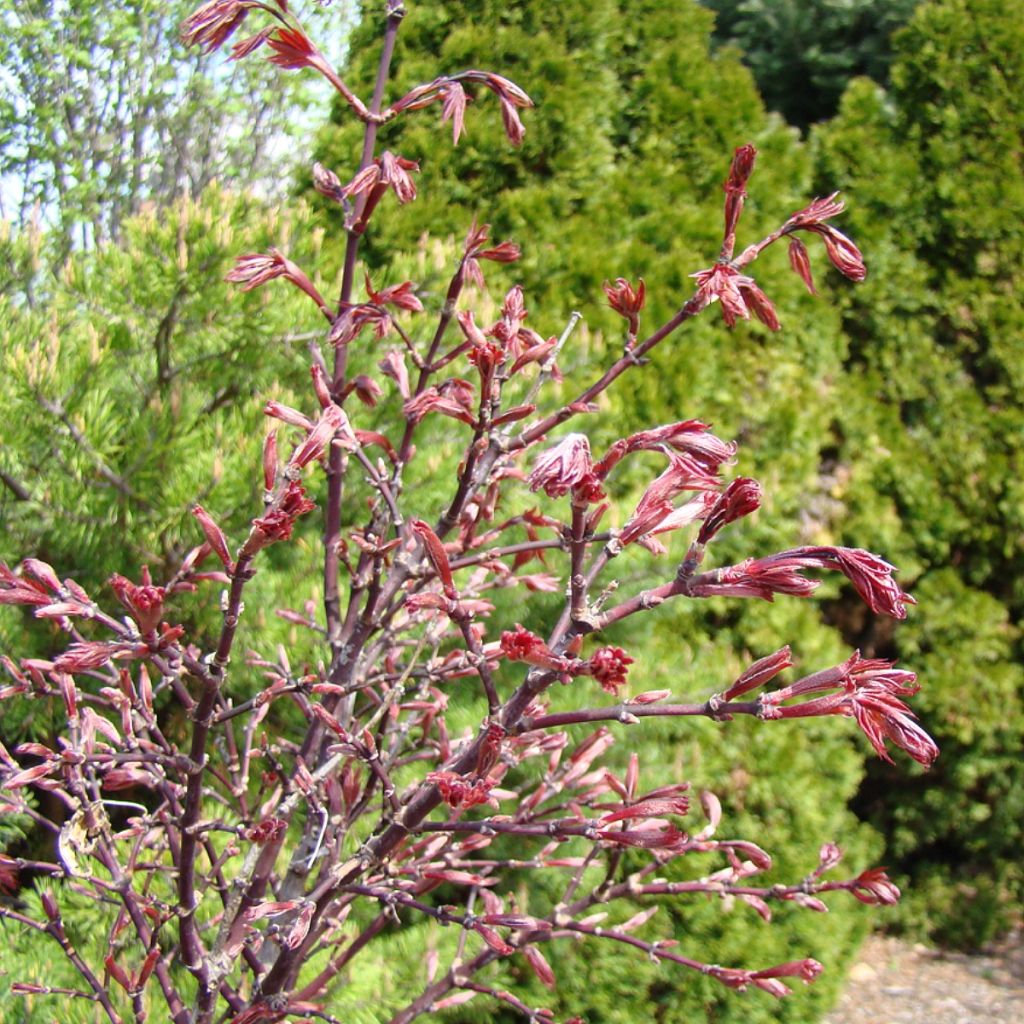

Acer palmatum Twomblys Red Sentinel - Japanese Maple
Acer palmatum Twomblys Red Sentinel - Japanese Maple
Acer palmatum Twomblys Red Sentinel
Japanese Maple, Palmate Maple
Beautiful bush, perfectly packaged!
Thérèse , 14/03/2023
This item cannot be shipped to the selected country
Delivery charge from €5.90
Delivery to Corse prohibited
More information
Schedule delivery date,
and select date in basket
This plant carries a 24 months recovery warranty
More information
We guarantee the quality of our plants for a full growing cycle, and will replace at our expense any plant that fails to recover under normal climatic and planting conditions.
From €5.90 for pickup delivery and €6.90 for home delivery
Express home delivery from €8.90.
Delivery to Corse prohibited: UE law prohibits the import of this plant from mainland France to Corse as part of the fight against Xylella fastidiosa. Please accept our sincere apologies.
More information

Does this plant fit my garden?
Set up your Plantfit profile →
Description
Acer palmatum 'Twomblys Red Sentinel' is a charming Japanese maple for small gardens. Its narrow and irregular habit sets it apart from the cup-shaped varieties, and its foliage is colourful all year round. The young leaves have a vibrant red hue before turning purple throughout the season. In autumn, the foliage bursts into red again, ending the season in a grand finale!
Native to eastern China, Korea, and Japan, Acer palmatum is the source of numerous horticultural varieties that compete in beauty. The Japanese maple now belongs, like all maples, to the Sapindaceae family (formerly Aceraceae ). It is hardy but dislikes dry and cold winds, scorching exposures, and dry and chalky soils.
The 'Twomblys Red Sentinel' cultivar has a fairly slow growth rate. Its habit is upright, with an irregular shape that can indeed evoke a human sentinel, giving it a natural appearance. Of small dimensions, it will reach approximately 3m (10ft) in height with a width of 1.5m (5ft), or a little more over time. Leafy from the base, it is more of a bush than a tree, with an architecture and foliage colour that will pique curiosity in the garden.
In spring, it produces palmate leaves with 5 or 7 lobes in a vibrant red colour. The hue darkens to purple, which it retains throughout the growing season. Then in autumn, the foliage returns to its youthful colour, displaying a striking scarlet red before bidding farewell with the arrival of winter.
Acer palmatum 'Twomblys Red Sentinel' is not strictly an acidic-soil plant, but it prefers humus-rich and moisture-retentive soils. It dreads atmospheric dryness and thrives in oceanic climates, provided it is sheltered from the wind. Elsewhere, it is important to ensure a certain level of humidity by mulching the soil above its roots and monitoring watering, especially in summer. If planted in a container on a terrace, it should be remembered that this cultivation method is more stressful than in open ground, as the plant cannot benefit from the same thermal inertia or interactions with nearby plants (shade, humidity levels, etc.). Avoid the scorching afternoon sun and especially strong winds that may cause the leaf tips to wither.
Its unique aesthetics guarantee its success in a Japanese or contemporary garden, paired with other sculptural plants such as Mahonia 'Soft Caress' to create a delicate scene, or Cryptomeria 'Globosa Nana' with its surprising cushion-like habit, whose deep green colour will enhance the warm hues of our small maple. Many yellow or variegated foliage shrubs will also complement this maple, such as Physocarpus 'Anny's Gold'. It will blend beautifully with many ericaceous plants, creating contrasts of colours and forms: golden summer heath, camellias with dark glossy leaves, variegated Pieris, and Skimmia 'Magic Marlot' will all make great companions.
Report an error about the product description
Acer palmatum Twomblys Red Sentinel - Japanese Maple in pictures
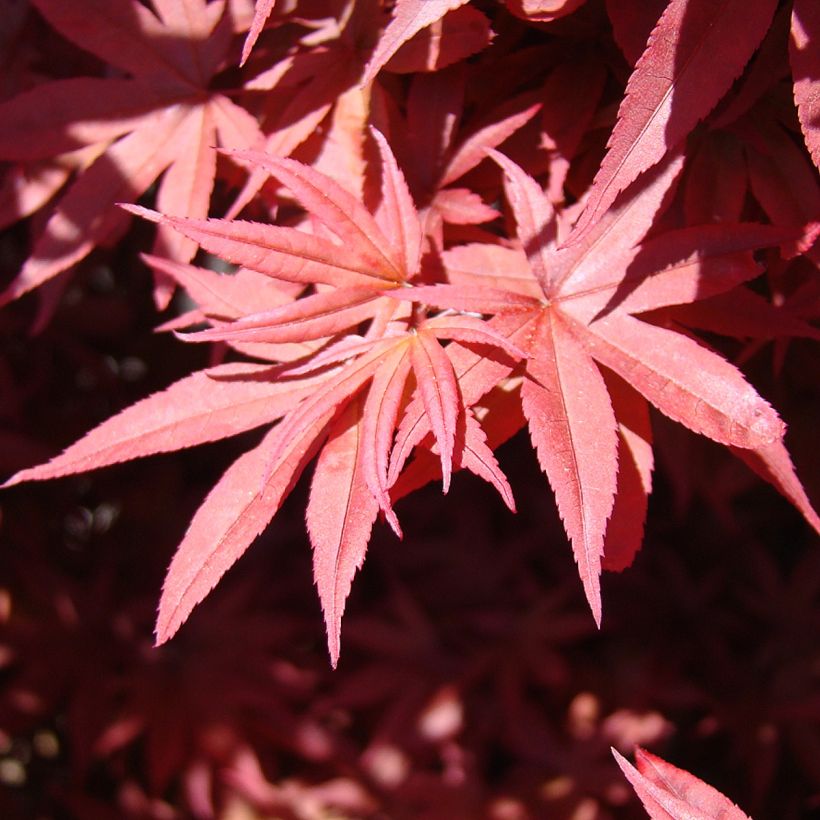

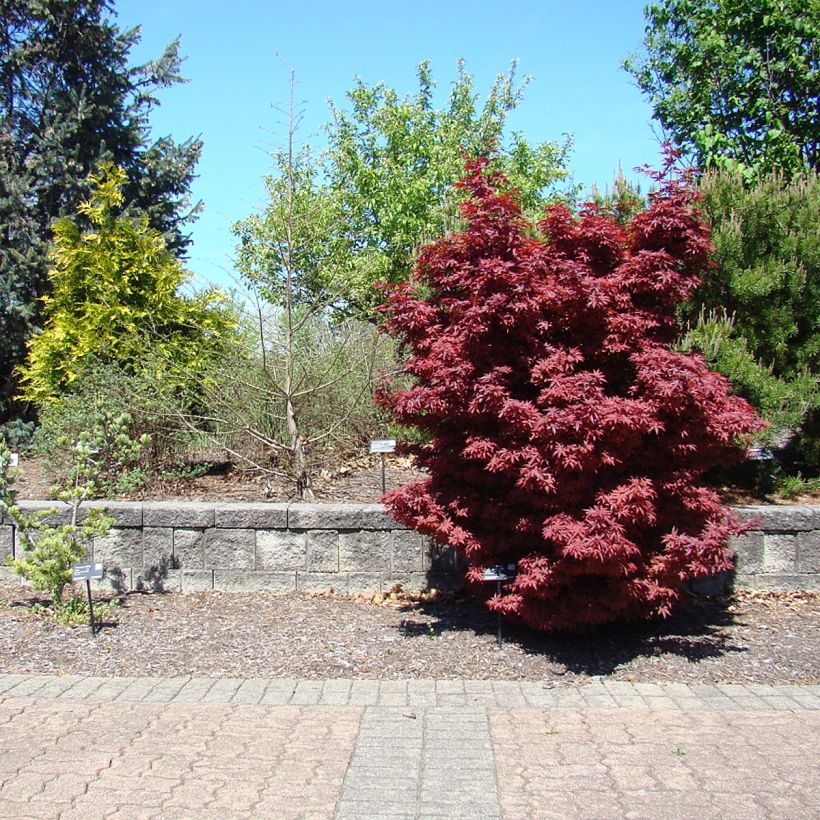

Plant habit
Flowering
Foliage
Botanical data
Acer
palmatum
Twomblys Red Sentinel
Sapindaceae
Japanese Maple, Palmate Maple
Cultivar or hybrid
Other Japanese Maples
Planting and care
Plant in spring or autumn in preferably light, humus-rich, neutral to acidic, deep, loose, and well-drained soil. It should be placed in a sunny or partially shaded position, and especially sheltered from cold and dry winds that may dry out its magnificent foliage. The soil should be kept moist by mulching in summer, if necessary, especially when the plant is exposed to the sun, but should not be waterlogged in winter. Apply a significant amount of organic matter every 3 years to ensure a good humus content in the soil. Mulch and water when required, and mist the foliage on hot evenings.
In the case of container planting, use a slightly acidic substrate (pH 6) mixed with compost. Water regularly, especially in summer, and avoid exposing it to afternoon sun and wind, as container cultivation conditions are already more drying than in open ground.
Monitor the appearance of scale insects, as well as Verticillium wilt in the soil, a fungal disease that occurs in heavy and excessively moist soil (risk eliminated in containers).
Planting period
Intended location
Care
-
, onOrder confirmed
Reply from on Promesse de fleurs
Haven't found what you were looking for?
Hardiness is the lowest winter temperature a plant can endure without suffering serious damage or even dying. However, hardiness is affected by location (a sheltered area, such as a patio), protection (winter cover) and soil type (hardiness is improved by well-drained soil).

Photo Sharing Terms & Conditions
In order to encourage gardeners to interact and share their experiences, Promesse de fleurs offers various media enabling content to be uploaded onto its Site - in particular via the ‘Photo sharing’ module.
The User agrees to refrain from:
- Posting any content that is illegal, prejudicial, insulting, racist, inciteful to hatred, revisionist, contrary to public decency, that infringes on privacy or on the privacy rights of third parties, in particular the publicity rights of persons and goods, intellectual property rights, or the right to privacy.
- Submitting content on behalf of a third party;
- Impersonate the identity of a third party and/or publish any personal information about a third party;
In general, the User undertakes to refrain from any unethical behaviour.
All Content (in particular text, comments, files, images, photos, videos, creative works, etc.), which may be subject to property or intellectual property rights, image or other private rights, shall remain the property of the User, subject to the limited rights granted by the terms of the licence granted by Promesse de fleurs as stated below. Users are at liberty to publish or not to publish such Content on the Site, notably via the ‘Photo Sharing’ facility, and accept that this Content shall be made public and freely accessible, notably on the Internet.
Users further acknowledge, undertake to have ,and guarantee that they hold all necessary rights and permissions to publish such material on the Site, in particular with regard to the legislation in force pertaining to any privacy, property, intellectual property, image, or contractual rights, or rights of any other nature. By publishing such Content on the Site, Users acknowledge accepting full liability as publishers of the Content within the meaning of the law, and grant Promesse de fleurs, free of charge, an inclusive, worldwide licence for the said Content for the entire duration of its publication, including all reproduction, representation, up/downloading, displaying, performing, transmission, and storage rights.
Users also grant permission for their name to be linked to the Content and accept that this link may not always be made available.
By engaging in posting material, Users consent to their Content becoming automatically accessible on the Internet, in particular on other sites and/or blogs and/or web pages of the Promesse de fleurs site, including in particular social pages and the Promesse de fleurs catalogue.
Users may secure the removal of entrusted content free of charge by issuing a simple request via our contact form.
The flowering period indicated on our website applies to countries and regions located in USDA zone 8 (France, the United Kingdom, Ireland, the Netherlands, etc.)
It will vary according to where you live:
- In zones 9 to 10 (Italy, Spain, Greece, etc.), flowering will occur about 2 to 4 weeks earlier.
- In zones 6 to 7 (Germany, Poland, Slovenia, and lower mountainous regions), flowering will be delayed by 2 to 3 weeks.
- In zone 5 (Central Europe, Scandinavia), blooming will be delayed by 3 to 5 weeks.
In temperate climates, pruning of spring-flowering shrubs (forsythia, spireas, etc.) should be done just after flowering.
Pruning of summer-flowering shrubs (Indian Lilac, Perovskia, etc.) can be done in winter or spring.
In cold regions as well as with frost-sensitive plants, avoid pruning too early when severe frosts may still occur.
The planting period indicated on our website applies to countries and regions located in USDA zone 8 (France, United Kingdom, Ireland, Netherlands).
It will vary according to where you live:
- In Mediterranean zones (Marseille, Madrid, Milan, etc.), autumn and winter are the best planting periods.
- In continental zones (Strasbourg, Munich, Vienna, etc.), delay planting by 2 to 3 weeks in spring and bring it forward by 2 to 4 weeks in autumn.
- In mountainous regions (the Alps, Pyrenees, Carpathians, etc.), it is best to plant in late spring (May-June) or late summer (August-September).
The harvesting period indicated on our website applies to countries and regions in USDA zone 8 (France, England, Ireland, the Netherlands).
In colder areas (Scandinavia, Poland, Austria...) fruit and vegetable harvests are likely to be delayed by 3-4 weeks.
In warmer areas (Italy, Spain, Greece, etc.), harvesting will probably take place earlier, depending on weather conditions.
The sowing periods indicated on our website apply to countries and regions within USDA Zone 8 (France, UK, Ireland, Netherlands).
In colder areas (Scandinavia, Poland, Austria...), delay any outdoor sowing by 3-4 weeks, or sow under glass.
In warmer climes (Italy, Spain, Greece, etc.), bring outdoor sowing forward by a few weeks.

































